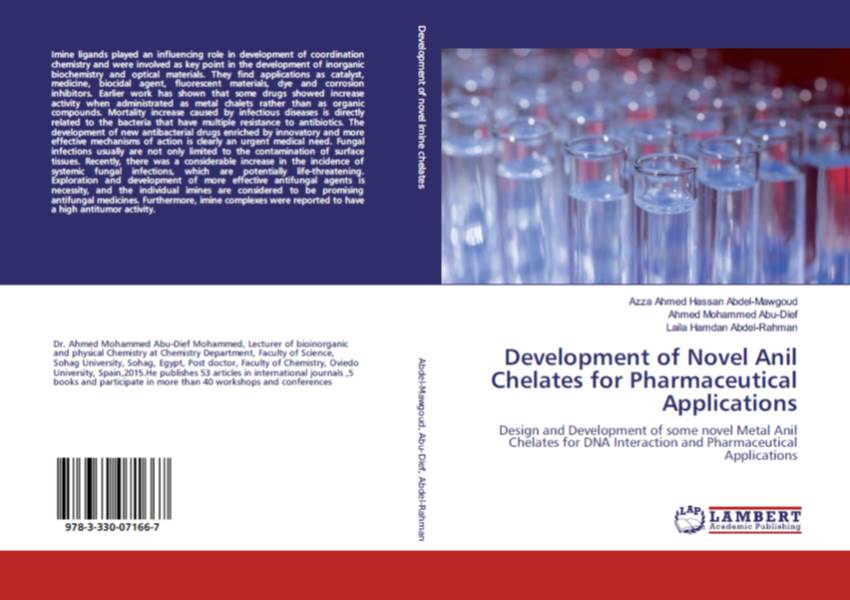Air and moisture stable coordination compounds of some first transition metals such as Cr (III), VO (II), Ni(II) and Mn(II) with newly designed tri- and tetra-dentate imine ligands (HNAP, HNPN and ESPN) were synthesized. Tridentate imine ligands (HNAP, ESAP) were synthesized by reacting 2-hydroxynapthaldehyde (HN) with 2-aminophenol (AP), whereas tetra-dentate imine ligands (HNPN and ESPN) were prepared by reacting 2-hydroxy-1-napthaldehyde (HN) or 3-ethoxysalicyaldehyde (ES) with 1,2-phenylenediamine. All the prepared imine ligands were analyzed by their melting points, 1H NMR, 13C NMR spectra, elemental analyses, UV-Vis and IR spectra. The data obtained from spectral investigation especially 1H and 13C NMR confirmed the formation of azomethine nitrogen in the ligand structure. Molecular structures of the prepared imine complexes were identified by several techniques including elemental analyses, IR, UV/ Vis, TGA, conductivity and magnetic susceptibility measurements. Thermogravimetric (TGA) analysis data were studied and indicated high stability for all the prepared complexes and suggested the presence of lattice and/or coordinated water molecules in the complexes. Coats–Redfern method has been used to calculate the kinetic and thermodynamic parameters of the metal complexes. The molar conductance of the prepared complexes in fresh solutions of DMF lies in the range 2.10- 12. 5 Ω-1 cm2 mol-1, indicating their non-electrolytic behavior for all the prepared imine complexes .Moreover, the stoichiometry and the stability constant of the prepared imine complexes have been determined spectrophotometrically. The pH profile revealed that the wide range of pH stability of the investigated complexes is at pH = ̴ 4- 11 in most of them.
Correlation between all analytical and physical tools used in the investigation, octahedral geometry is proposed for all the prepared Mn(II) and Cr(III) imine complexes, tetrahedral geometry for HNAPNi complex and square planar geometry for HNPNNi complex. In addition to, square pyramidal geometry is proposed for HNPNV and ESPNV whereas distorted square pyramidal geometry for HNAPV complex. Moreover, the prepared imine ligands and their complexes were evaluated for antimicrobial activities against three types of bacteria such as Bacillus subtilis (+ve), Escherichia coli (-ve) and Staphylococcus aureus (+ve) and three types of fungi such as Asperagillus niger, Candida glabrata and Trichophyton rubrum using well diffusion method. The results revealing that the prepared complexes are good anti-pathogenic agents than their ligands. Moreover, DNA-binding properties of the prepared imine complexes were explored by electronic absorption, viscosity measurements and gel electrophoresis. The experimental evidences indicated that the imine complexes could strongly bind to CT-DNA mainly via an intercalation mechanism. In addition to, the cytotoxic activity of the prepared imine complexes on human colon carcinoma cells, (HCT-116 cell line), hepatic cellular carcinoma cells, (HepG-2 cell line) and breast carcinoma cells (MCF-7 cell line) has cytotoxicity effect against growth of carcinoma cells compared to the clinically used Vinblastine standard. Furthermore, the molecular docking into TRK (PDB: 1t46) was done for the optimization of the investigated compounds as potential TRK inhibitors.


